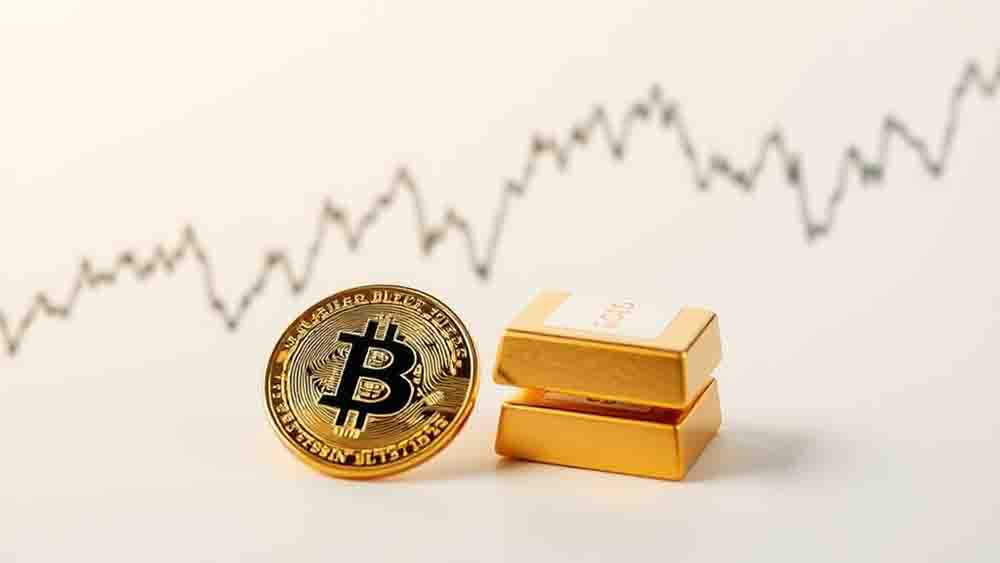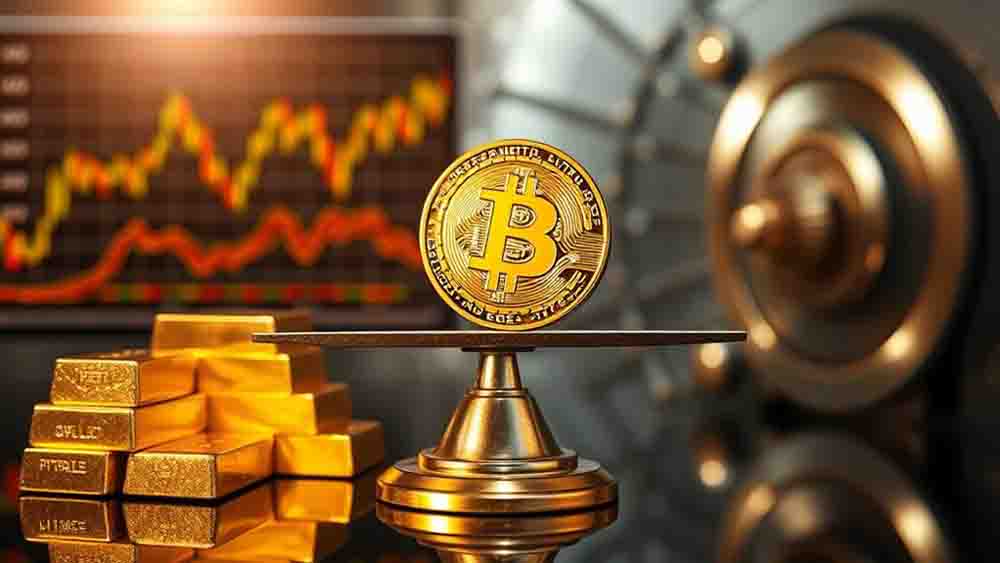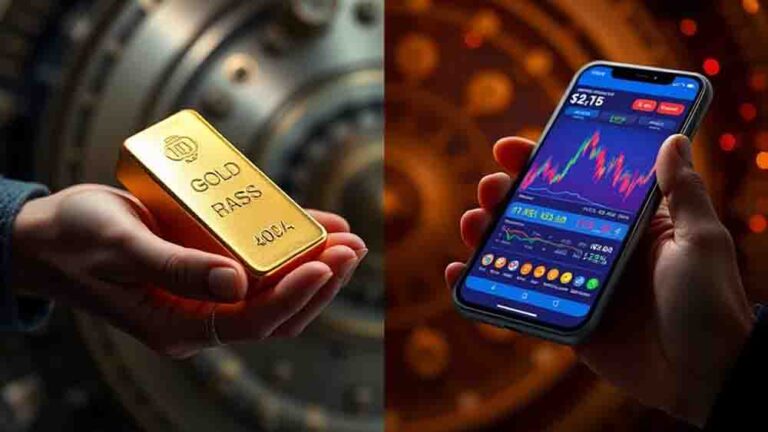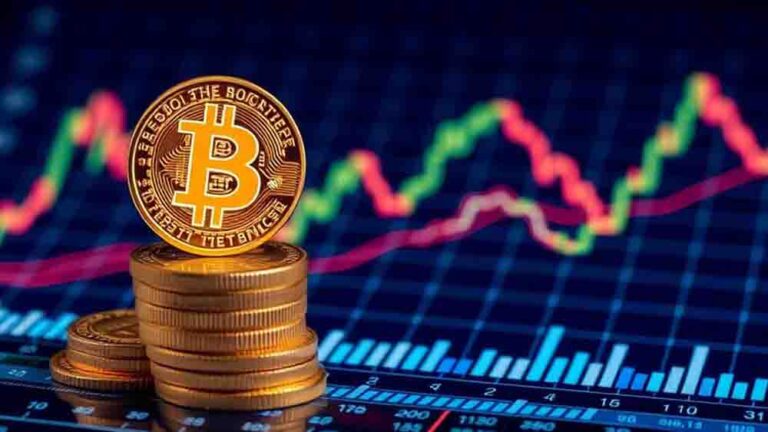7 Factors: Cryptocurrency Vs Precious Metals for Lasting Value
Note: This post may contain affiliate links, and we may earn a commission (with No additional cost for you) if you purchase via our link. See our disclosure for more info. The gold and crypto world is constantly changing. This is not financial, investment, legal, or professional advice. So, please verify the information on the gold and cryptocurrency provider’s websites.
Click below and listen to the podcast on this page.
You're faced with a significant decision: where to place your wealth for long-term value preservation. Cryptocurrency and precious metals each present compelling arguments, but which one truly stands the test of time? As you weigh your options, consider seven key factors. They could make or break your investment strategy. These elements will shape your financial security. They include historical performance and global economic influence. Don't rush into a decision. There's more at stake than you realize. You need to understand the full picture. The choice you make today could have far-reaching consequences for years to come.
Key Takeaways
- Historical performance: Gold has a millennia-long track record, while cryptocurrencies are relatively new and unproven.
- Market volatility: Precious metals offer more stability, whereas cryptocurrencies experience extreme price fluctuations.
- Regulatory environment: Gold operates within established frameworks, while cryptocurrencies face evolving and inconsistent regulations globally.
- Scarcity and supply: Both have limited supply, but gold's scarcity is natural, while cryptocurrency scarcity is programmed.
- Storage and security: Gold requires physical storage and protection, whereas cryptocurrencies need robust digital security measures.
Historical Performance and Longevity
The debate between cryptocurrency and precious metals often begins with their historical performance and longevity. When considering these factors, gold stands out as a time-tested store of value, with a track record spanning thousands of years. Its total value of $12.25 trillion reflects its enduring appeal across generations.
In contrast, Bitcoin, introduced in 2009, has a notably shorter history. With a market cap of $569 billion, it's relatively new to the investment landscape. This difference in longevity impacts how each asset performs during periods of economic uncertainty:
- Gold: Demonstrates gradual, stable appreciation over decades
- Bitcoin: Experiences more extreme price fluctuations and boom-and-bust cycles
During the 2008 financial crisis, gold prices nearly tripled from 2008 to 2011, showcasing its ability to retain value during economic instability.
Bitcoin, however, is more susceptible to market volatility and public sentiment.
While gold's price movements are influenced by supply, demand, and macroeconomic factors, Bitcoin's value is heavily impacted by media coverage and regulatory developments.
This difference in price drivers contributes to gold's reputation as a more stable long-term investment compared to the unpredictable nature of cryptocurrency.

Market Volatility and Price Stability
Moving from historical performance to present-day market dynamics, we'll examine the stark contrast in volatility between cryptocurrencies and precious metals. When considering price stability, gold has consistently demonstrated its role as a safe haven asset, maintaining a gradual appreciation over decades. In contrast, the cryptocurrency market, particularly Bitcoin, exhibits extreme volatility.
| Characteristic | Gold | Bitcoin |
|---|---|---|
| Price Stability | High | Low |
| Market Volatility | Low | High |
| Safe Haven Status | Yes | No |
| Long-term Investment | Suitable | Risky |
Gold prices have shown resilience during economic crises, rising from $1,000 in 2008 to over $2,100 in December 2023. This stability makes investing in gold an attractive option for risk-averse investors. On the other hand, Bitcoin prices have experienced dramatic fluctuations, with peaks and valleys that can occur within short timeframes.
The limited supply and tangible nature of gold contribute to its stability, while Bitcoin's digital scarcity leads to high volatility driven by market demand and public sentiment. Investors with low risk tolerance often gravitate towards gold for its historical performance and inverse correlation with stock markets. In contrast, the cryptocurrency market attracts those seeking potentially high short-term gains, despite the inherent risks associated with its unpredictable price movements.
Regulatory Environment and Acceptance
Government policies greatly influence how you can invest in and use cryptocurrencies versus precious metals.
You'll find that gold operates within a well-established regulatory framework, providing more stability and consumer protections, while Bitcoin's regulatory landscape is still evolving and varies widely across different countries.
This regulatory uncertainty, coupled with Bitcoin's volatility, has led to challenges in global adoption as a mainstream payment method, although some businesses are beginning to embrace cryptocurrencies.

Government Policies Impact Investments
Shaped by government policies, the regulatory landscape for cryptocurrencies and precious metals plays a significant role in investor decisions. As you consider your investment options, it's essential to understand how these policies impact market stability and long-term value.
Cryptocurrencies:
- Operate in a largely unregulated environment
- Face evolving regulatory frameworks, including taxation and compliance measures
- Experience varying degrees of acceptance across countries
- Limited acceptance as legitimate payment forms
- Potential for increased institutional investment with regulatory clarity
Precious Metals (e.g., Gold):
- Subject to stringent regulations
- Established trading hours and taxation policies
- Provide greater consumer protection
- Globally recognized as a trusted store of value
- Long-standing history of acceptance
The impact of government policies on these investments is significant. Cryptocurrencies' market stability and investor confidence are heavily influenced by regulatory changes, while precious metals benefit from a more established regulatory environment.
As you evaluate your investment options, consider how these factors may affect your portfolio's long-term value. The evolving nature of cryptocurrency regulations presents both opportunities and risks, while precious metals offer a more stable regulatory landscape.
Your investment strategy should account for these differences and align with your risk tolerance and financial goals.
Global Adoption Challenges
Three major challenges hinder the global adoption of cryptocurrencies compared to precious metals: regulatory inconsistency, limited acceptance, and infrastructure gaps. The regulatory environment for digital currencies like Bitcoin varies widely across countries, creating uncertainty for investors and businesses. While some nations embrace cryptocurrencies, others impose strict bans, leading to market volatility and impacting their viability as a store of value.
| Aspect | Cryptocurrencies | Precious Metals |
|---|---|---|
| Regulation | Inconsistent | Well-established |
| Acceptance | Limited (12% of U.S. businesses) | Widespread |
| Market Stability | Volatile | Relatively stable |
In contrast, gold and other precious metals benefit from a long history of universal recognition and established regulatory frameworks. This stability contributes to their widespread acceptance in financial markets and investment portfolios. The volatility of Bitcoin and other cryptocurrencies, partly due to regulatory uncertainties, makes them less attractive as a reliable store of value for many investors.
Infrastructure gaps also pose significant challenges for cryptocurrency adoption. While approximately 24% of the global population has access to digital currencies, this figure lags behind the availability of traditional financial services and precious metals markets. Overcoming these adoption hurdles will be vital for cryptocurrencies to compete with gold as a lasting store of value.

Scarcity and Supply Dynamics
When comparing cryptocurrencies and precious metals, you'll find that scarcity plays an essential role in their value.
Gold's finite supply is determined by geological factors, while Bitcoin's scarcity is programmed into its code with a cap of 21 million coins.
You'll notice that the mining processes for both assets differ greatly: gold extraction depends on physical resources and technology, whereas Bitcoin mining relies on computational power and energy consumption.
Fixed vs. Controlled Supply
At the heart of the debate between cryptocurrency and precious metals lies the concept of scarcity and supply dynamics. Gold, with its finite supply, has long been considered a stable store of value. Its availability is determined by mining rates and geological factors, creating a natural scarcity that influences its price.
Bitcoin, on the other hand, introduces a controlled supply capped at 21 million coins, creating digital scarcity that impacts its market value and investment appeal.
The supply and demand dynamics for gold are affected by various factors, including central bank policies and industrial uses. These influences tend to stabilize gold prices over time.
In contrast, Bitcoin's market is characterized by high volatility due to its smaller market size and sensitivity to news events. This can lead to rapid price fluctuations despite its limited supply.
While gold's value is influenced by external factors like geopolitical tensions and economic stability, Bitcoin's price is primarily driven by market sentiment and speculative trading.
This fundamental difference in supply dynamics and price influences makes each asset unique in its potential as a store of value and investment vehicle.
Mining and Minting Processes
The extraction and creation processes of gold and Bitcoin highlight fundamental differences in their scarcity and supply dynamics. Gold mining involves extracting ore from the earth and refining it, with global production reaching approximately 3,000 tons annually. This finite availability makes gold a tangible asset with inherent value.
In contrast, Bitcoin mining occurs on a peer-to-peer network, where powerful computers solve complex mathematical problems to validate transactions.
Key differences in scarcity factors include:
- Gold's supply is influenced by geological availability and mining rates
- Bitcoin has a capped supply of 21 million coins, creating digital scarcity
- Bitcoin's supply decreases over time through “halving” events
Both processes have environmental impacts:
- Gold mining is resource-intensive and can harm ecosystems
- Bitcoin mining consumes substantial energy, raising sustainability concerns
The scarcity and supply dynamics of both assets contribute to their perceived value. Gold's historical use as a tangible store of wealth appeals to traditional investors, while Bitcoin's digital scarcity attracts those seeking a modern alternative for long-term value preservation.

Technological Advancements and Adaptability
Technological advancements have considerably shaped the landscape of both cryptocurrencies and precious metals, but their impacts differ greatly. Bitcoin and other digital currencies have leveraged blockchain technology to enhance security, transparency, and functionality. This has led to increased adoption and adaptability in various economic environments. In contrast, physical gold's technological progress has primarily focused on mining efficiency and production methods.
The following table highlights key differences in technological advancements and adaptability:
| Aspect | Cryptocurrency | Precious Metals |
|---|---|---|
| Decentralization | Independent from traditional systems | Tied to physical supply and demand |
| Smart Contracts | Enables programmable transactions | Not applicable |
| Tokenization | Native digital asset | Emerging as tokenized gold |
| Intermediaries | Peer-to-peer transactions | Often require financial institutions |
| Adaptability | Highly adaptable to economic changes | Limited by physical properties |
Blockchain technology has allowed Bitcoin to operate without intermediaries, making it more resilient to economic fluctuations. The introduction of smart contracts has expanded cryptocurrency's utility beyond simple transactions, enabling complex financial operations in decentralized finance (DeFi). While precious metals like gold have seen some technological integration through tokenization, their fundamental properties remain unchanged. This difference in adaptability highlights the potential for cryptocurrencies to play a significant role in the future of finance.
Storage and Security Considerations
When considering storage and security, you'll find stark differences between cryptocurrencies and precious metals. Bitcoin, the leading cryptocurrency, relies on digital wallets that can be vulnerable to hacking, theft, or loss of private keys. These risks can lead to irreversible loss of funds.
In contrast, gold's physical properties allow for more traditional storage methods, such as vaults or safes, often with insured storage options.
Storage and security considerations for Bitcoin include:
- Strong digital security measures
- Protection against unauthorized access
- Safeguarding private keys
Gold storage benefits include:
- Physical security in insured facilities
- Legal proof of ownership through warehouse receipts
- Regulatory oversight for consumer protection
While both assets face theft risks, gold typically offers more reliable insurance options. Bitcoin's security heavily depends on the user's ability to protect their private keys and wallet access.
Additionally, gold's ownership is easier to track and prove legally, whereas Bitcoin's pseudonymous nature makes ownership verification challenging.
The highly volatile nature of cryptocurrencies adds another layer of complexity to storage and security considerations. Unlike Bitcoin, which lacks central authority regulation and insurance for user deposits, gold trading and storage are subject to regulatory oversight, providing better consumer protection.
Global Economic Influence
Moving beyond storage concerns, it's important to examine how cryptocurrencies and precious metals impact the global economy.
Gold has long been a trusted hedge against inflation, with a total value of $12.25 trillion as of July 2023. Its inverse correlation with stock markets makes it a stabilizing force during economic downturns. For example, gold prices surged nearly 300% from 2008 to 2011 amid the financial crisis, demonstrating its role as a safe haven.
Bitcoin, introduced in 2009, has quickly gained prominence with a market cap of $569 billion. However, its value is more susceptible to market trends and speculative trading. Unlike gold, Bitcoin's volatility can lead to notable losses during economic instability.
When considering a diversified investment portfolio, it's essential to understand these differences:
- Gold's purchasing power remains relatively stable over time
- Bitcoin's value fluctuates dramatically based on investor sentiment
- Regulatory changes greatly impact cryptocurrency markets
- Gold's value is tied to physical demand and geopolitical factors
While Bitcoin offers potential for rapid growth, gold's long-standing reputation as a reliable store of value makes it a more consistent hedge against economic uncertainty.

Frequently Asked Questions
What Factors Give Cryptocurrencies Their Value?
Cryptocurrencies derive their value from several key factors.
You'll find that digital scarcity, like Bitcoin's 21 million coin limit, creates rarity. Their utility for peer-to-peer transactions without intermediaries appeals to those seeking financial autonomy.
Market demand and public sentiment drive rapid price fluctuations. The security of blockchain technology guarantees transaction integrity, building trust.
Regulatory developments and increasing acceptance by businesses and institutions further bolster their perceived value in the financial landscape.
These elements combine to give cryptocurrencies their unique worth.
Why Is Gold Better Than Crypto?
Gold's superiority over crypto lies in its proven track record and stability.
You'll find that gold has maintained value for thousands of years, while cryptocurrencies are relatively new and volatile.
Gold's tangible nature provides intrinsic value, unlike digital-only crypto assets.
You can rely on gold's established markets for easier buying and selling.
Additionally, gold is less affected by regulatory changes, offering you a safer long-term investment.
During economic downturns, gold often serves as a dependable safe haven, increasing in value.
Has Bitcoin Outperformed Gold?
Bitcoin has outperformed gold in certain periods, but it's vital to take into account the bigger picture.
You'll find that Bitcoin's explosive growth has led to higher short-term returns, especially during its 2021 peak.
However, gold's consistent appreciation and stability over centuries make it a more reliable long-term investment.
When you examine their performance, remember that Bitcoin's extreme volatility and smaller market size contrast sharply with gold's steady growth and established role as a safe-haven asset.
What Are the Factors Influencing Cryptocurrency Prices?
Cryptocurrency prices are influenced by several key factors.
You'll find that market demand and investor sentiment play essential roles, often driven by media coverage and public perception.
The limited supply of coins, like Bitcoin's cap at 21 million, creates scarcity that impacts prices.
Regulatory developments and government policies can cause significant fluctuations.
Additionally, technological advancements in blockchain networks affect investor confidence.
External factors, such as macroeconomic trends and geopolitical events, can also lead to increased volatility in cryptocurrency prices.
Conclusion
As you weigh the merits of cryptocurrencies and precious metals, consider their unique attributes. Gold's stability and acceptance provide a strong base. But, cryptocurrencies have great potential. You'll need to evaluate your risk tolerance, regulatory concerns, and long-term goals. Both assets have their strengths and weaknesses regarding volatility, scarcity, and security. Your decision should match your financial plan and view on the future of global economics and technology.











